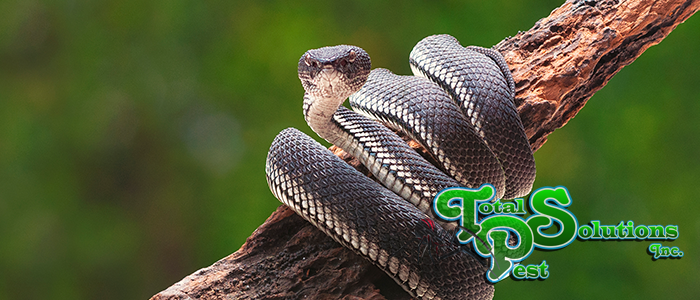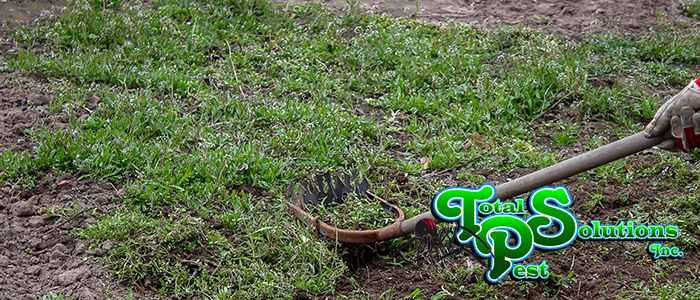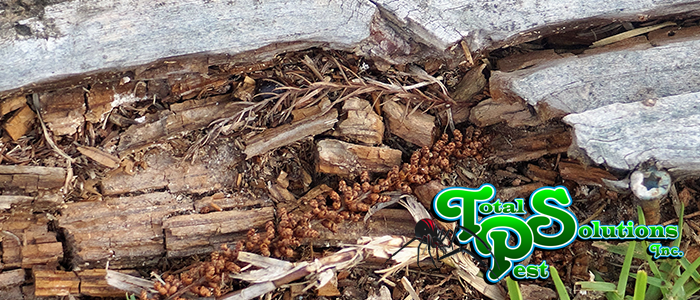
Snakes to Watch Out For in Florida
With all the snakes you can find within Florida, knowing which snakes to watch out for is a great thing to keep in mind. Beneath we’ll go over some of the most common, their temperaments, and how to avoid them.
Snakes to Watch – Keep Your Family and Pets Safe
The best advice off right off the bat to keep you, your family, and your pets safe from snakes that can be dangerous is never to get too close to the snake. You also should not try to catch or kill it, as this can agitate the snake and make it much more likely to attack. If you think a snake is dead, you also should not try to handle it, as it may only be acting very, very still.
Five of the six venomous snakes found in Florida are pit vipers, snakes that get their name from the heat-sensitive “pits” on both sides of their face, but only three of them can be found throughout the state.
If you aren’t sure if a snake is venomous, do the safe thing and give it its space.
Coral Snakes
The Sunshine State only has one species of coral snake: the Eastern (or Harlequin) Coral Snake. This snake is recognized by its brightly-colored bands and can reach up to 2.5 feet in length, a secretive species of many habitats that prefers to spend its time underground or under other objects like logs and stones.
These snakes are, as previously mentioned, brightly colored with bands of red, yellow, and black that encircle the entire body. There are snakes that look very similar to this snake, so knowing the differences is extremely important. The Eastern Coral Snake has a black snout immediately followed by a band of yellow, a tail that only has black and yellow bands, and has long bands of red and black and only short bands of yellow.
Look-alike species have red, yellow (or white), and black patterns that are often confused with theirs, but a helpful phrase to remember to differentiate them is, “Yellow, red, STOP!” like traffic lights, as in the Eastern Coral Snake, the red and yellow bands touch, whereas in other species they do not.
Copperheads
Generally only occurring in Florida in the panhandle just west of Tallahassee, these snakes typically inhabit areas around rivers, swamps, streams, and ravines. They are thick-bodied and can reach up to three feet in length with light brown to gray colorations. Large bands of darker brown shaped like hourglasses can be found along their backs, and have keeled scales and great camouflage.
Cottonmouths
Often mistaken for Copperheads, these keeled-scale snakes can be found anywhere in Florida with preferences for wet areas like lakes, rivers, ponds, and wetlands. The average length is from 2-4 feet, but they can reach up to 6. Cottonmouths are named for their defensive tactic of coiling their body and opening their mouth wide to show the cotton-white interior. If you don’t bother them further, they tend to flee.
Young cottonmouths are brighter, with red-brown crossbands and yellow tails, while adults can be uniformly dark brown or black but may have a faint or distinct crossband pattern. Be careful—Cottonmouths are often confused with several species of harmless water snakes.
Snakes to Watch – Eastern Diamondback Rattlesnakes
One of the worst snakes to watch out for – The largest venomous snake of Florida at an average of 3-6 feet, Eastern Diamondbacks are found throughout the state in scrublands, pinelands, coastal barrier islands, and sometimes in urban areas. DO NOT EVER APPROACH THIS SNAKE. Diamondbacks can strike up to two-thirds of their body length, and even newborns are equipped with a full complement of their venom.
These snakes are easily identified thanks to their distinctive row of diamonds along their backs with beige borders and brown centers. They have keeled scales, large and chunky heads, and their tails end in rattles that make a loud buzzing sound when they feel as if they’re threatened. Eastern Diamondbacks may begin to rattle up to 20 or 30 feet away from you. Listen carefully to the direction that they’re in and keep away.
Pygmy Rattlesnakes
Conversely, the smallest venomous snake in Florida averaging at around only 1-2 feet as adults, these snakes tend to make pine flatwoods, oak scrubs, open pinelands, and palm hammocks their habitat, but they can also be found in urban areas like golf courses and suburban yards. They are Florida’s most commonly-encountered venomous snake and they are aggressive. They hold their ground, and if threatened, will not hesitate to strike.
With spade-shaped heads, these snakes are small but stout. Pygmies are gray with dark blotches on their sides and backs, with the ones on the back being more prominent. On their back, they often have red-brown spots running between the dark blotches. Unlike Diamondbacks, the rattles on Pygmies are so small that it is often barely audible.
Timber Rattlesnakes
Last but not least, the thick-headed Timber Rattlers are usually only found in North Florida and the panhandle. 3-5 feet in length, these snakes have a preference for low and fairly damp bottomlands, hardwood hammocks, river beds, pine flatwoods, cane thickets, and swamps. This snake is particularly dangerous due to its size and should be left alone.
Beige or pinkish in body color, a series of dark, chevron-shaped bands and a rust-colored stripe along the middle of their back is how these snakes look. Like their name suggests, their tail ends with a rattle that is dark brown or black in color. These snakes also have strongly keeled scaled like the Diamondbacks, giving them a very “rough” appearance.]
If you’d like further great tips like this, look no further than Total Pest Solutions. We have your safety and pest prevention in mind.
continue reading
Related Posts
Holiday Pest-Free Homes in Winter Haven: Avoiding Cargo Pests As
Auburndale’s Mole Cricket Damage: Repairing Turf Before Frost As the
Lakeland’s Fall Termite Swarms: Early Detection Tips As the summer






